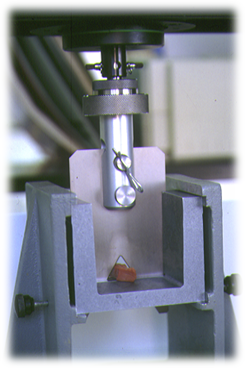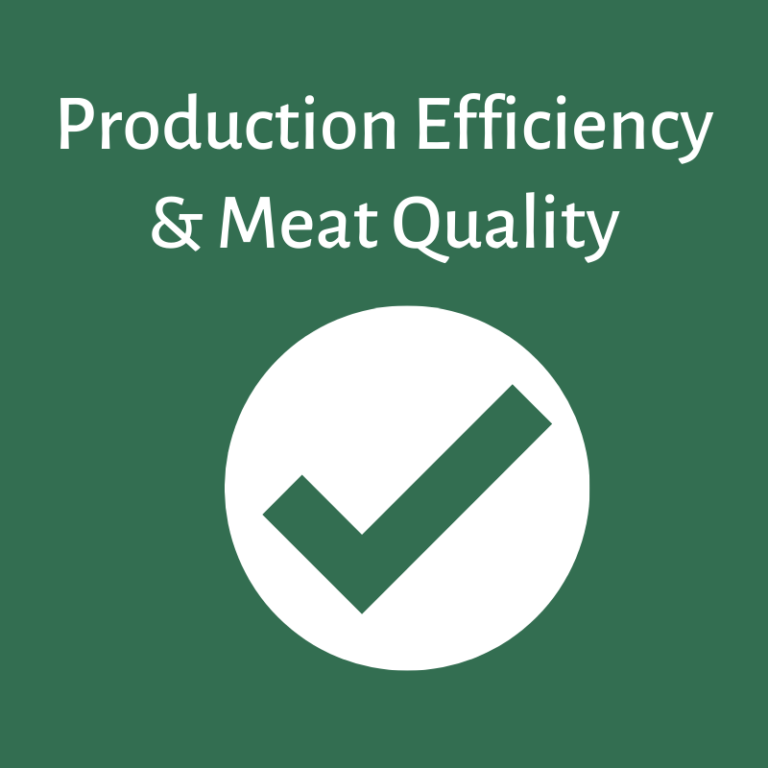
https://ec.europa.eu/eip/agriculture/en/find-connect/projects/bovine-beef-innovation-network-europe
Beef tenderness highly impacts consumer satisfaction, thus it deserves to be tackled by the whole meat chain, including the farm. Genetics provides the opportunity to improve a trait cumulatively and permanently, as opposed to other interventions. Tenderness is heritable, which means that selection would be effective, but measurement is delayed (after slaughter and ageing) and is difficult and expensive to obtain. Therefore, genomic tools have been developed to aid in the identification of animals delivering tender (or tough) meat, which could be included in breeding programmes. In this sense, once polymorphisms are located in the relevant genes, such as the calpastatin (CAST) gene, and the effect is confirmed in a target population, genotyping can be included for the bulls to be ranked according to a marker-assistance selection. Furthermore, if tough meat is identified early on, technological management such as longer ageing could be applied in order to tenderise it.
Currently, breeding programmes of two local breeds in Spain – Parda de Montaña and Pirenaica – are based on quantitative evaluation undertaken with BLUP analysis, while the use of DNA markers is restricted to major genes (the myostatine gene, MSTN, in Parda de Montaña) or parentage assignments. The single nucleotide polymorphisms (SNPs) rs210072660 and rs109221039 provide an additional resource as a potential genetic marker in breeding programmes, considering the extent of the effects found (animals with the unfavourable allele for the SNP rs210072660 have up to 22% tough meat) and the relatively high frequency of the favourable alleles (A alleles for both SNPs) across Parda de Montaña and Pirenaica animals.
 | |
Figure 1: Locations of SNPs associated to meat tenderness in the CAST gene. SNPs of intron 5 and exon 30 are included in two commercial SNP panels for cattle - Igenity and Genestar, respectively | Figure 2. Toughness measurement using Warner Bratzler Shear Force (WBSF) equipment |
These SNPs were described for the first time in the above-mentioned breeds by a research team from the Agrifood Research and Technology Centre of Aragón (CITA) and the Agencia Aragonesa para la Investigación y el Desarrollo (Araid), in collaboration with the Instituto Nacional de Investigación y Tecnología Agraria y Alimentaria (INIA), following a request from two breed associations (ARAPARDA and ASAPI). The research to find the SNPs related to toughness, as measured by Warner Bratzler Shear Force values (shown in Figure 2), took around six months and used data from nearly 200 animals. Previous information from studies conducted by the research team was also useful in identifying animals that provide either tender or tough meat. Since the research was developed together with the two breeding associations, the implementation in practice was immediate and a patent was developed (Patent No. ES2396080A1). Blood or meat samples are needed to conduct a polymerase chain reaction – restriction fragment length polymorphism (PCR-RFLP) or qPCR (quantitative polymerase chain reaction) to detect the target SNPs, which are usually performed in bulls selected for future use as reproducers.
Video in Spanish: Nueva variante génica para la predicción de terneza de carne en Agrosfera de RTVE
Analysing the database of genes from the GenBank and the genotyping performed in other breed groups, such as Limousine or Charolais, these genetic variants can be observed in many breeds around the world, including Holstein and Bos indicus cattle, so similar potential markers could be applied, but further research needs to be conducted since the effect is breed-dependent and may also vary with possible interactions with other non-genetic factors such as the production system and ageing. The analysis of these SNPs is done on the young bulls selected for breeding, in order to avoid spreading any alleles related to tough meat.
There are three lessons learnt that could be relevant for other practitioners who want to implement this good practice:
- It is possible to increase favourable allele frequency in terms of meat tenderness in a cattle population with the use of marker-assistance selection (MAS) of preselected young bulls.
- The resulting meat can be associated with a quality brand that guarantees tender meat.
- If tough meat is identified early on, technological management such as longer ageing could be applied in order to tenderise it.
Impact on:
 | It may be possible to increase the price of products of guaranteed tenderness. |
 | |
 | Reduced variability in meat tenderness is expected, and therefore so is a high-quality product. |
 | Ageing time could be reduced in the most tender carcasses, implying more efficient production and therefore increased sustainability. |
Authors: Virginia C. Resconi, Jakeline Vieira Romero
Source of information:
- Interview with Jorge Calvo, a geneticist from CITA (Spain)
Further information:
- Iguácel et al. (2019). Livestock Science 230:103820.
- Leal-Gutiérrez & Mateescu (2019). Food Biotechnology 33:193–216.
- Calvo (2019). La terneza de la carne como un ejemplo de selección asistida por marcadores en bovino de carne - https://rica.chil.me/post/la-terneza-de-la-carne-como-un-ejemplo-de-seleccion-asistida-por-marcadores-en-b-255047
- Press release (in spanish): Una investigación aragonesa permite predecir la terneza de la carne de bovino: http://prensa.unizar.es/noticias/1302/130221_z0_15.pdf
- Patent No. ES2396080A1: https://patentimages.storage.googleapis.com/9d/19/4f/9d19ce7b2101b9/ES2396080A1.pdf
